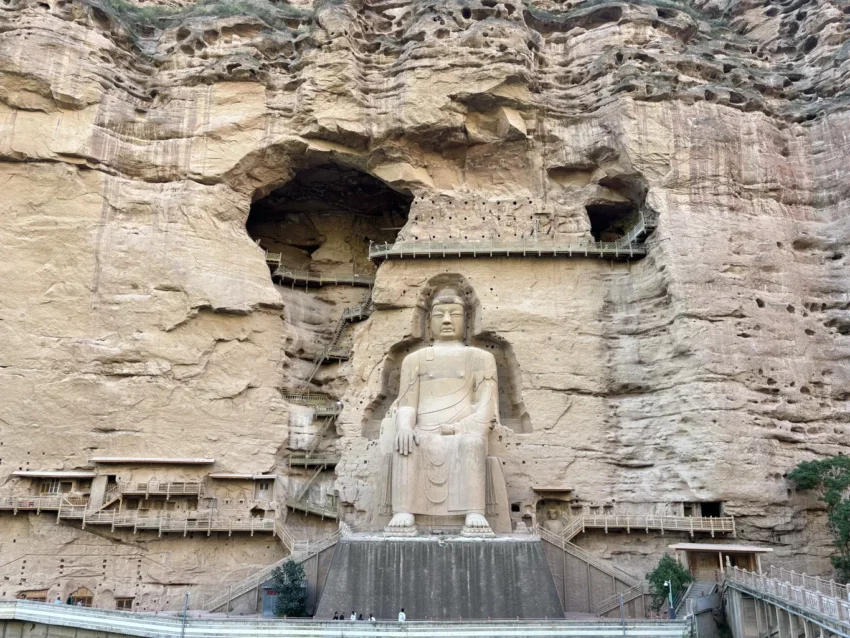The Bingling Temple Grottoes: A Marvel of Ancient Buddhist Art
The Bingling Temple Grottoes are carved into a cliffside on the west of Dasigou in Jishishan Mountain. They are located in Taping Village, Wangtai Town, Yongjing County of Gansu Province, China. These grottoes are a remarkable treasure of ancient Buddhist art.
Get your dose of History via Email
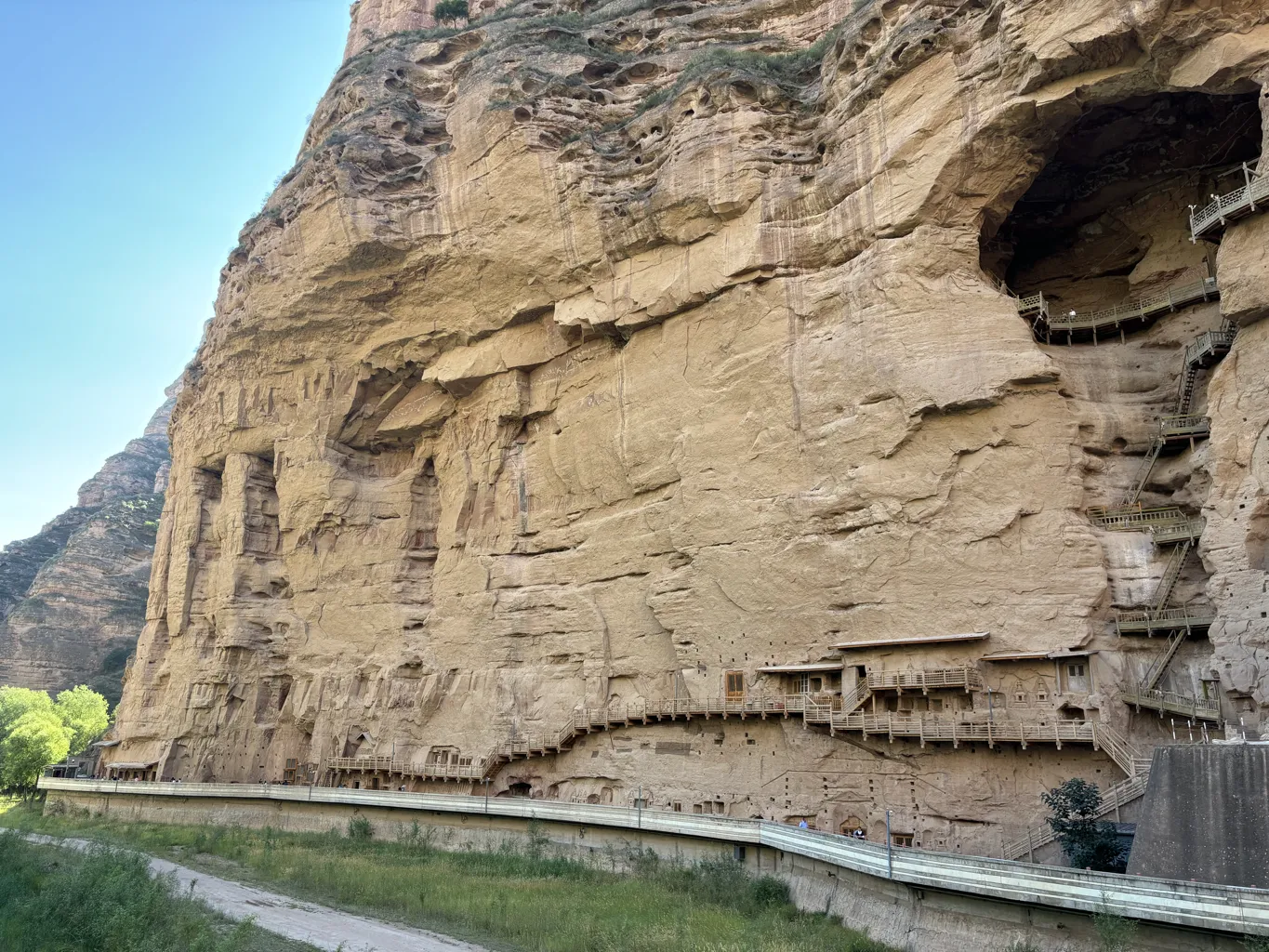
A Historical Overview
The origins of the Bingling Temple Grottoes trace back to the early Western Jin Dynasty. The first caves were carved around the 3rd century AD. In 420 AD, during the first year of Jianhong in the Western Qin Dynasty, construction officially began. The site was initially called Tangshuku, meaning “ghost cave” in the Qiang language.
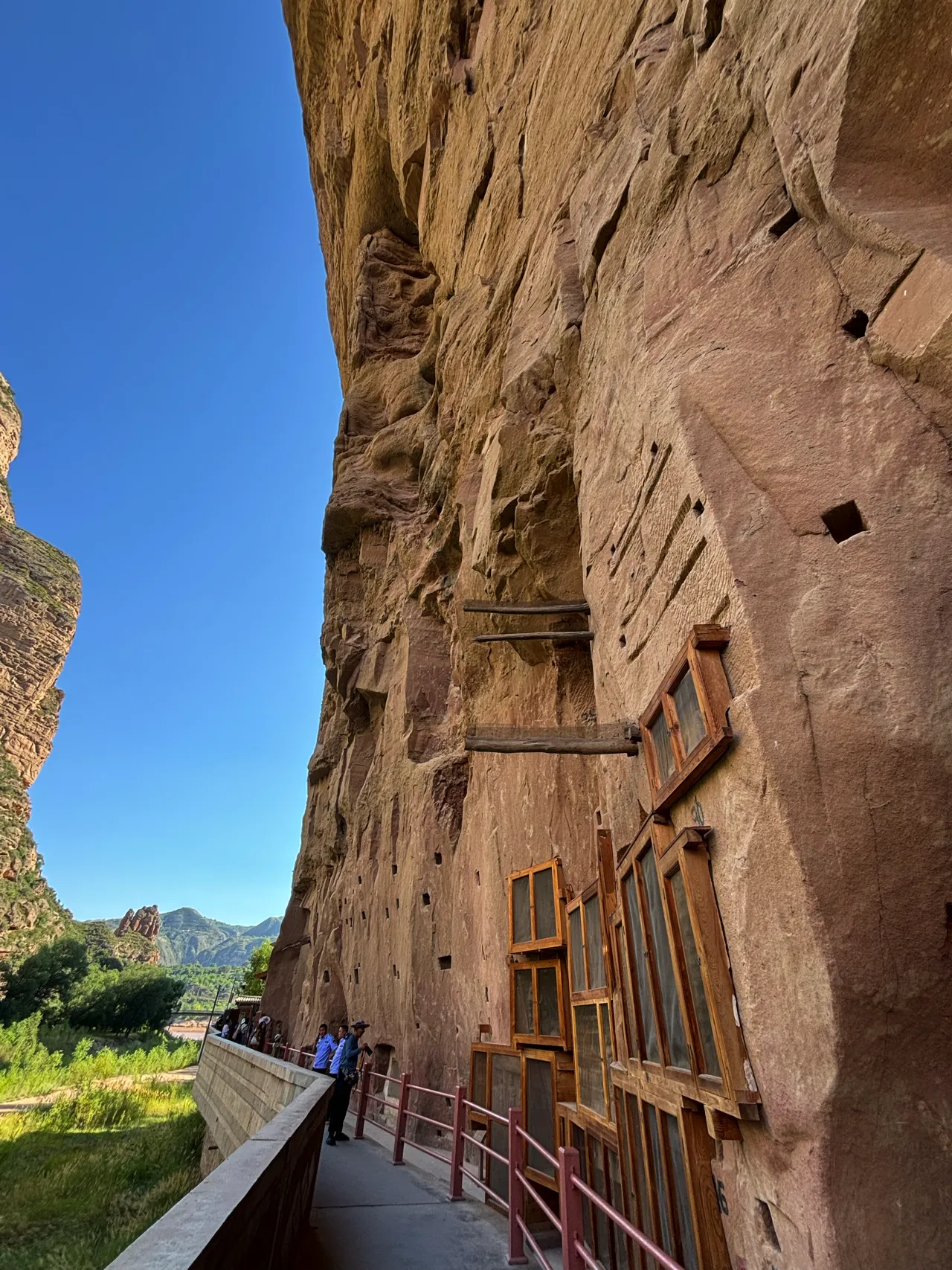
Name Changes Over Time
Throughout history, the site underwent several name changes. It was called Longxing Temple during the Tang Dynasty and Lingyan Temple in the Song Dynasty. After the Yongle period in the Ming Dynasty, it became known as Bingling Temple. The name Bingling is derived from the Tibetan term “Xianba Bingling,” which means “thousand Buddhas” or “hundred thousand Maitreya Buddha continent.”
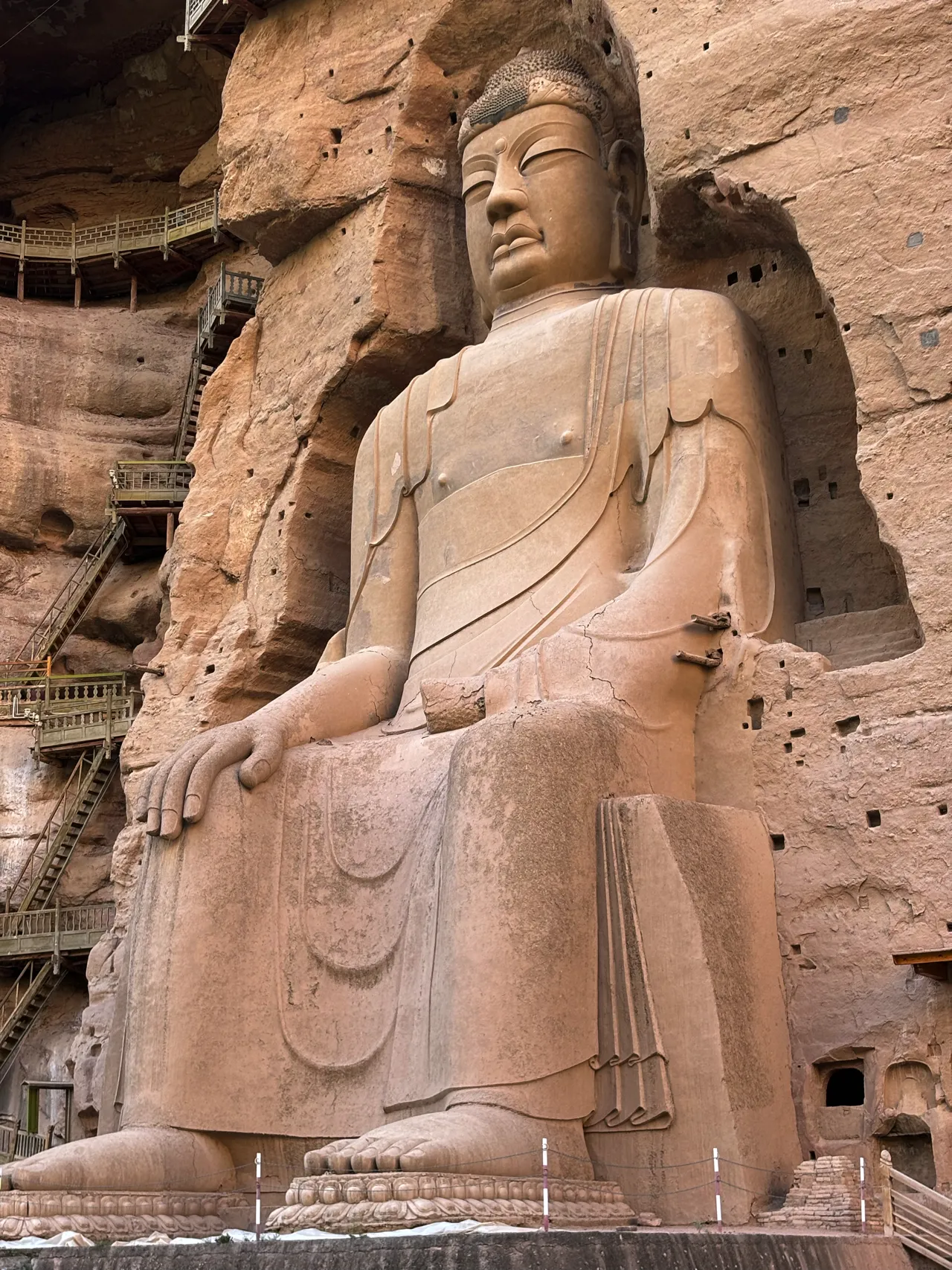
Unique Features
Today, 34 caves and 149 niches still exist. The site houses 694 stone statues and 82 clay statues. The cave designs are similar to those found at the Yungang and Longmen Grottoes. However, Bingling is unique due to its niches shaped like stupas, which are rarely seen elsewhere. Cave 169 is especially notable. It holds an ink inscription dating back to 420 AD, the earliest known date at the site.
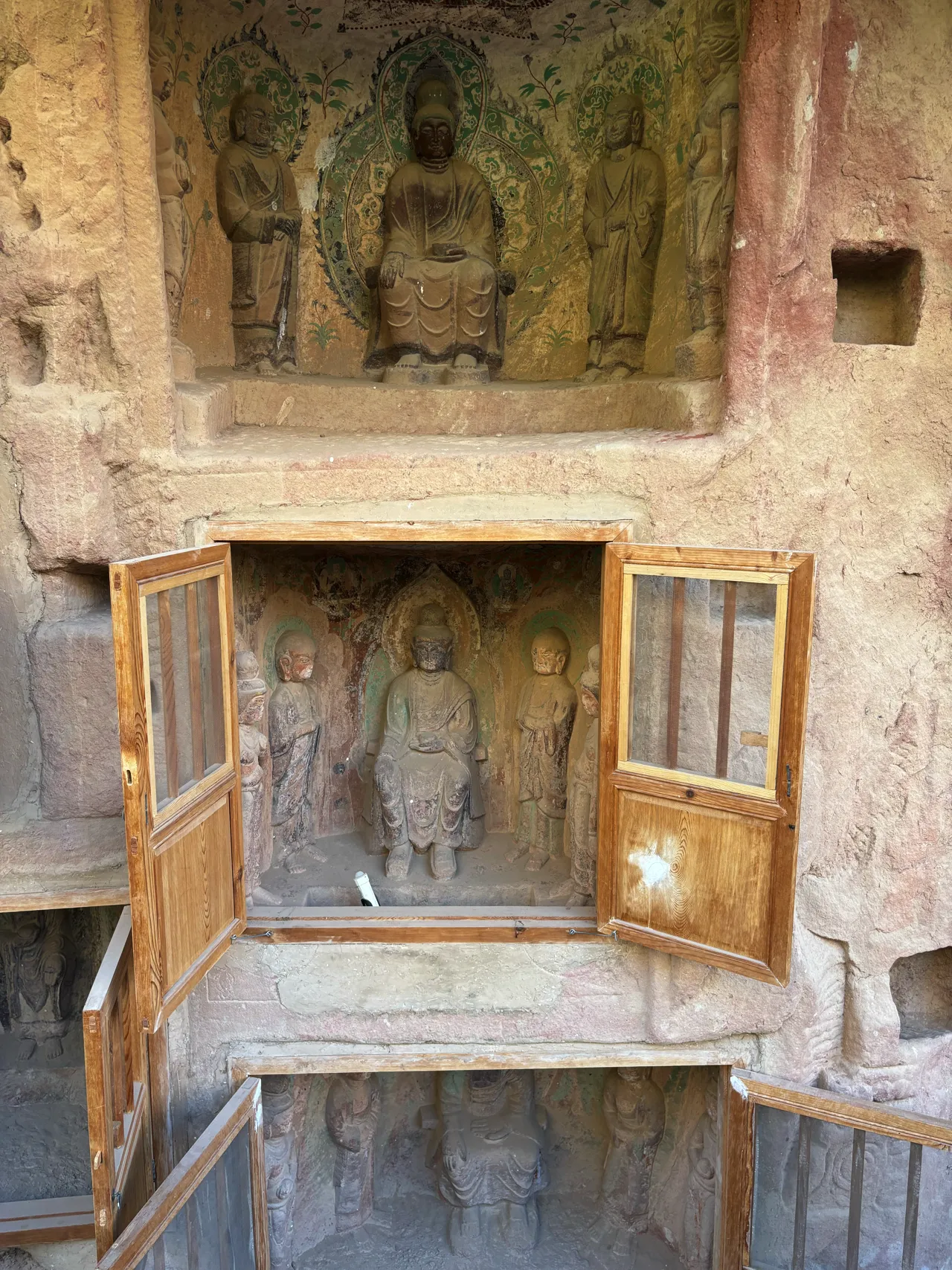
Geographic and Cultural Significance
The Bingling Temple is a series of grottoes filled with Buddhist sculptures. These are carved into natural caves and caverns along the Yellow River. The grottoes are located in a canyon, just north of where the Yellow River empties into the Liujiaxia Reservoir. The site lies in Yongjing County, part of the Linxia Hui Autonomous Prefecture in Gansu Province. It is about 100 kilometers southeast of Lanzhou.
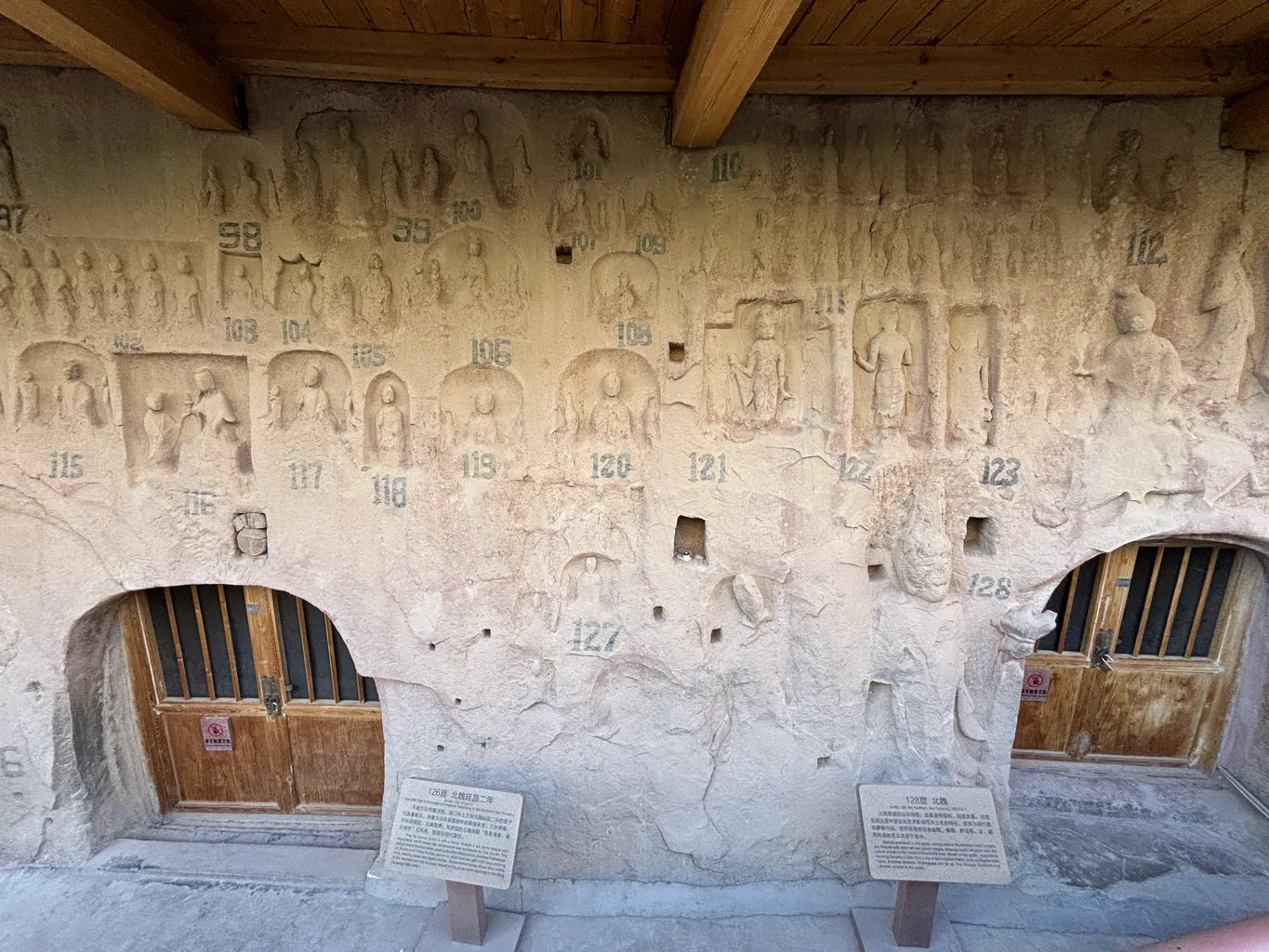
UNESCO Recognition
In 2014, Bingling Temple, along with other sites along the Silk Road, was inscribed on the UNESCO World Heritage List. It is part of the “Silk Roads: the Routes Network of Chang’an-Tianshan Corridor” World Heritage Site.
A Millennium of Artistic Evolution
The Bingling Temple Grottoes evolved over a millennium. The first grotto was carved around 420 CE during the Western Qin Dynasty. More grottoes were added during the Wei, Sui, Tang, Song, Yuan, Ming, and Qing dynasties. Each grotto reflects the artistic style of its respective dynasty.

A Cultural Midpoint
Bingling Temple serves as both a stylistic and geographic midpoint. It lies between the monumental Buddhas of Bamiyan in Afghanistan and the Buddhist Grottoes of central China, such as the Yungang Grottoes near Datong and the Longmen Grottoes near Luoyang.
The Toll of Time
Despite its resilience, time has not spared the Bingling Temple Grottoes. Earthquakes, erosion, and looters have damaged many of the caves. However, 183 caves, 694 stone statues, and 82 clay sculptures still stand today.
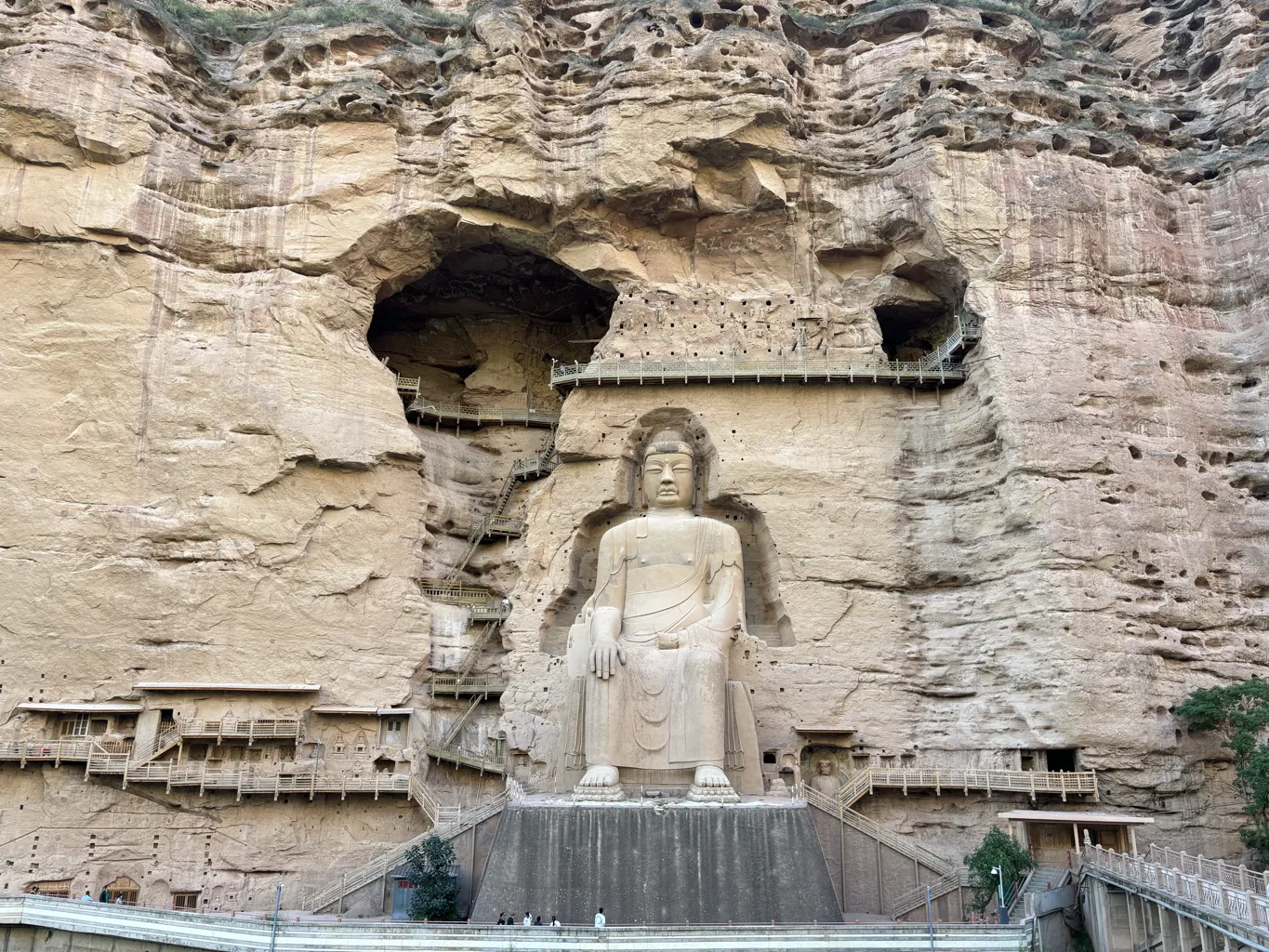
Unique Cave Layouts
The relief sculptures and caves, filled with Buddhas and frescoes, stretch along the northern side of the canyon for about 200 meters. Each cave serves as a miniature temple filled with Buddhist imagery. The site culminates in a large natural cavern. Wooden walkways wind up the rock face to hidden cliff-side caves. Here, a towering Maitreya Buddha, standing over 27 meters tall, watches over the valley.
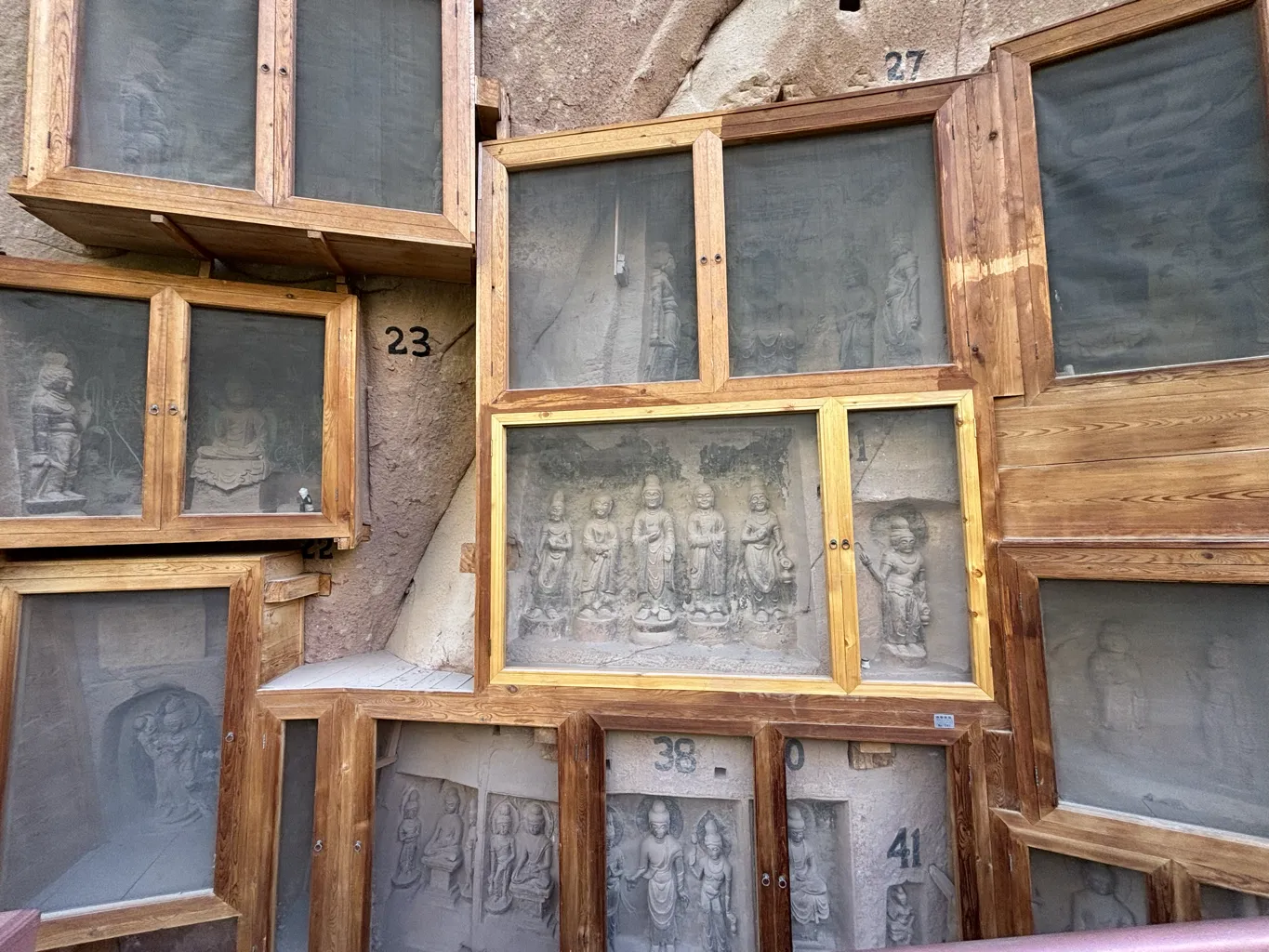
Significant Caves and Niches
Niche 64 (678 AD, Tang Dynasty)
Niche 64 features a Buddha, two Bodhisattvas, and two Heavenly Kings. The carving is simple yet vivid. Inscriptions by Zhang Chujin, the vice Minister of Justice, describe historical events between the Tang Dynasty and Vassal states. These inscriptions offer crucial insights into the era’s political and religious landscape.
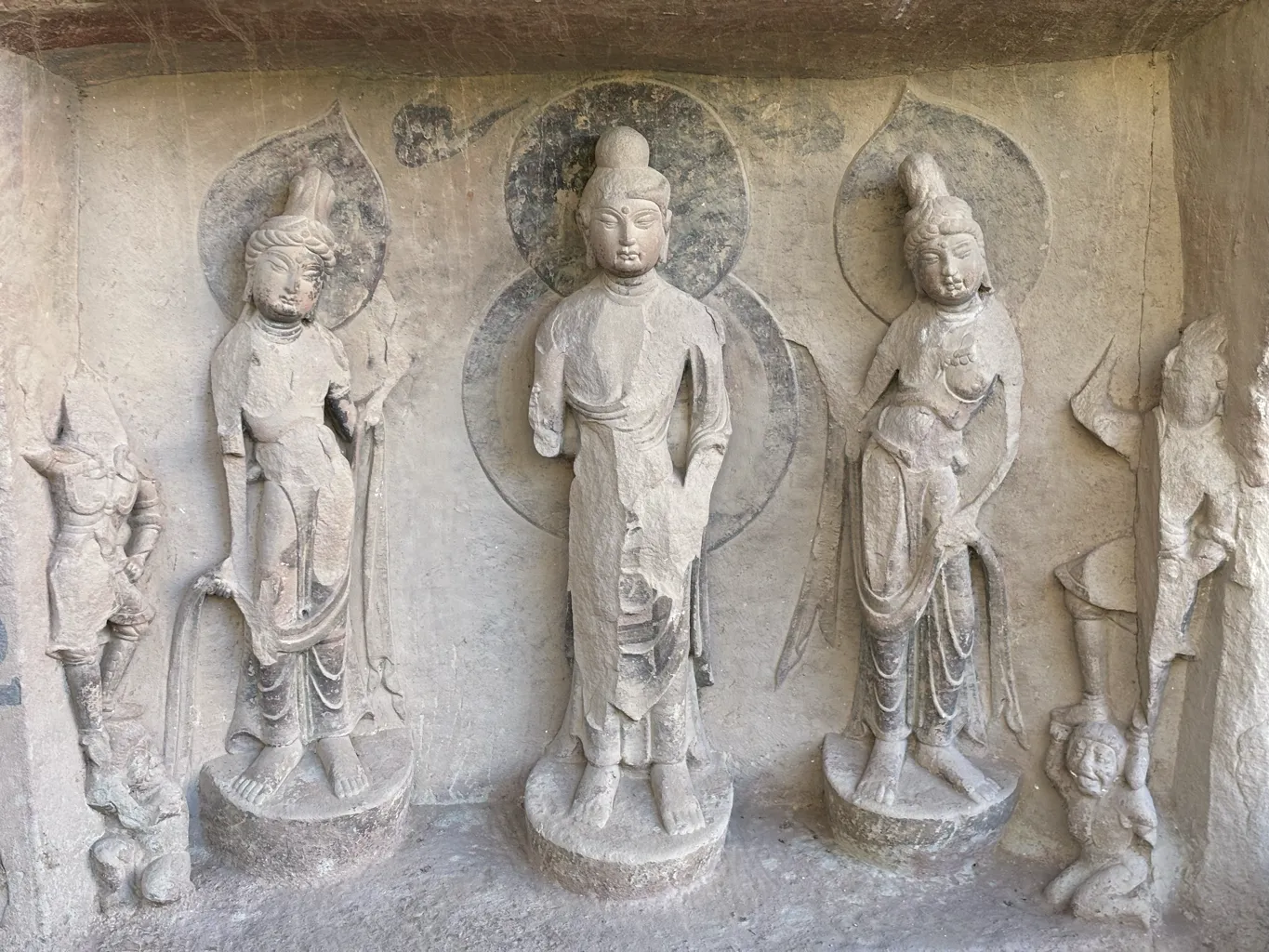
Grotto 70 (Tang Dynasty, Rebuilt in Ming Dynasty)
Grotto 70 houses a wooden statue of Avalokitesvara. This figure has eight arms and eleven faces arranged vertically. The grotto’s murals are laid out in an orderly fashion, featuring Mandala Maps, the Eighteen Disciples of the Buddha, and Sutra Paintings. An inscription outside the cave dates back to 1601.
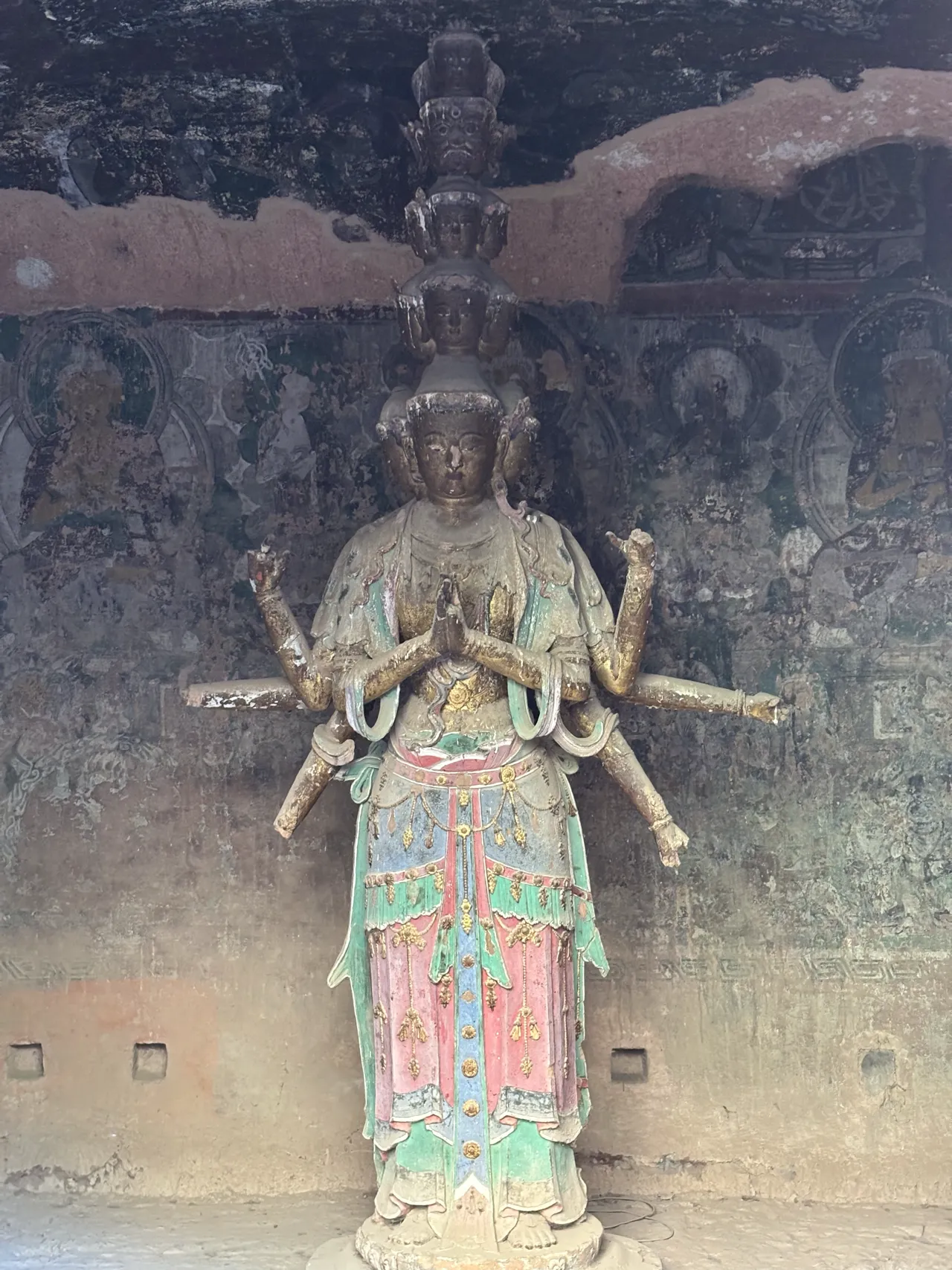
Grotto 82 (Northern Zhou Dynasty, 557-581 AD)
Grotto 82 contains a sitting clay Buddha in a lotus position, flanked by two standing Bodhisattvas. The murals are layered. The bottom layer dates to the Northern Zhou Dynasty. The top layer was repainted during the Ming Dynasty. The upper wall features imagery of Zongkapa, the founder of the Gelug Sect of Tibetan Buddhism.
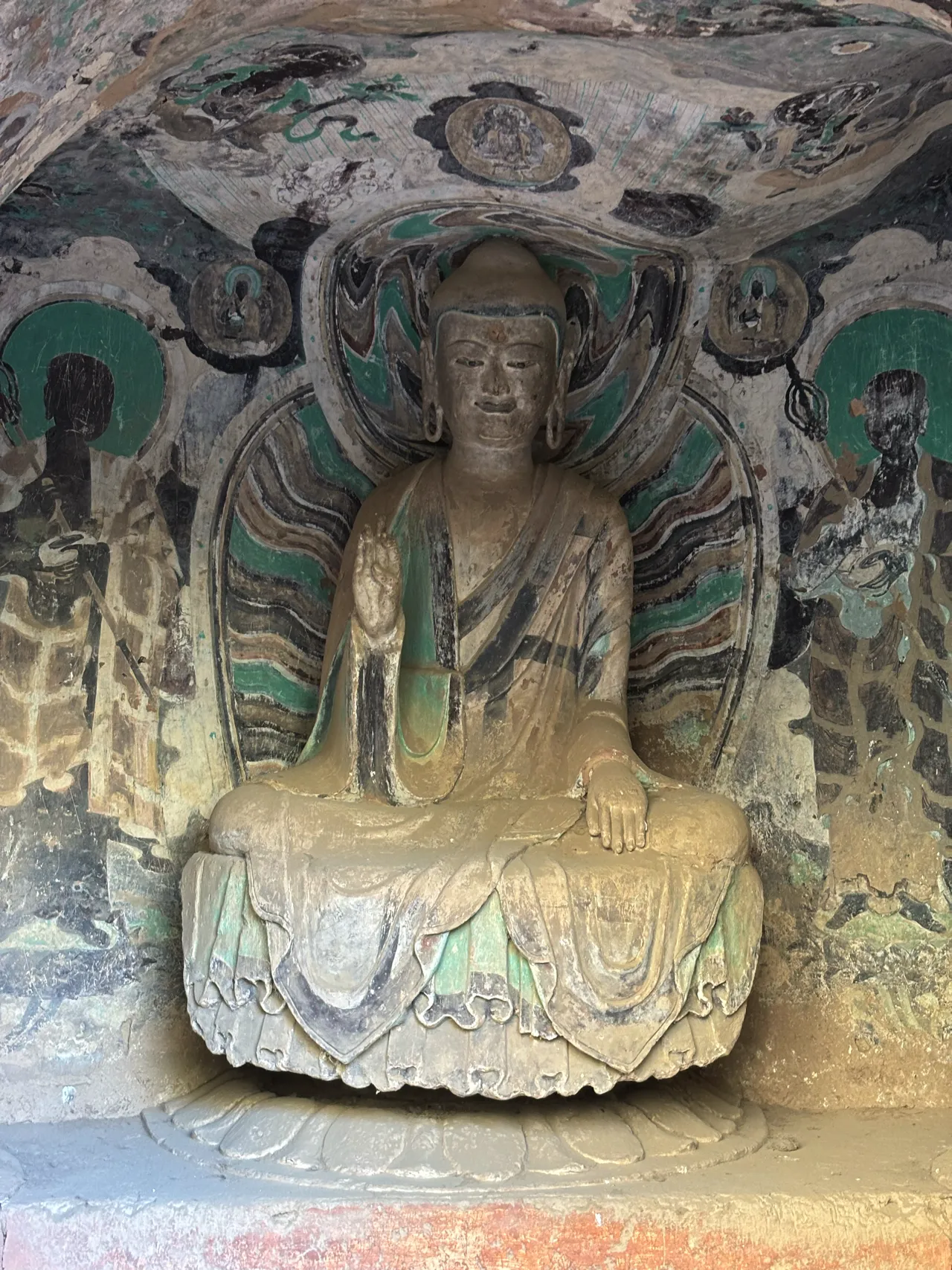
Niche 125 (Northern Wei Dynasty, 368-534 AD)
Niche 125 contains Buddhas Shakyamuni and Prabhutaratna, sitting together with two Bodhisattvas. The surrounding carvings of “matas” or strongmen highlight the aesthetic appeal of the Northern Wei Dynasty. Buddhism and metaphysics converged during this time, making this niche a fascinating study.
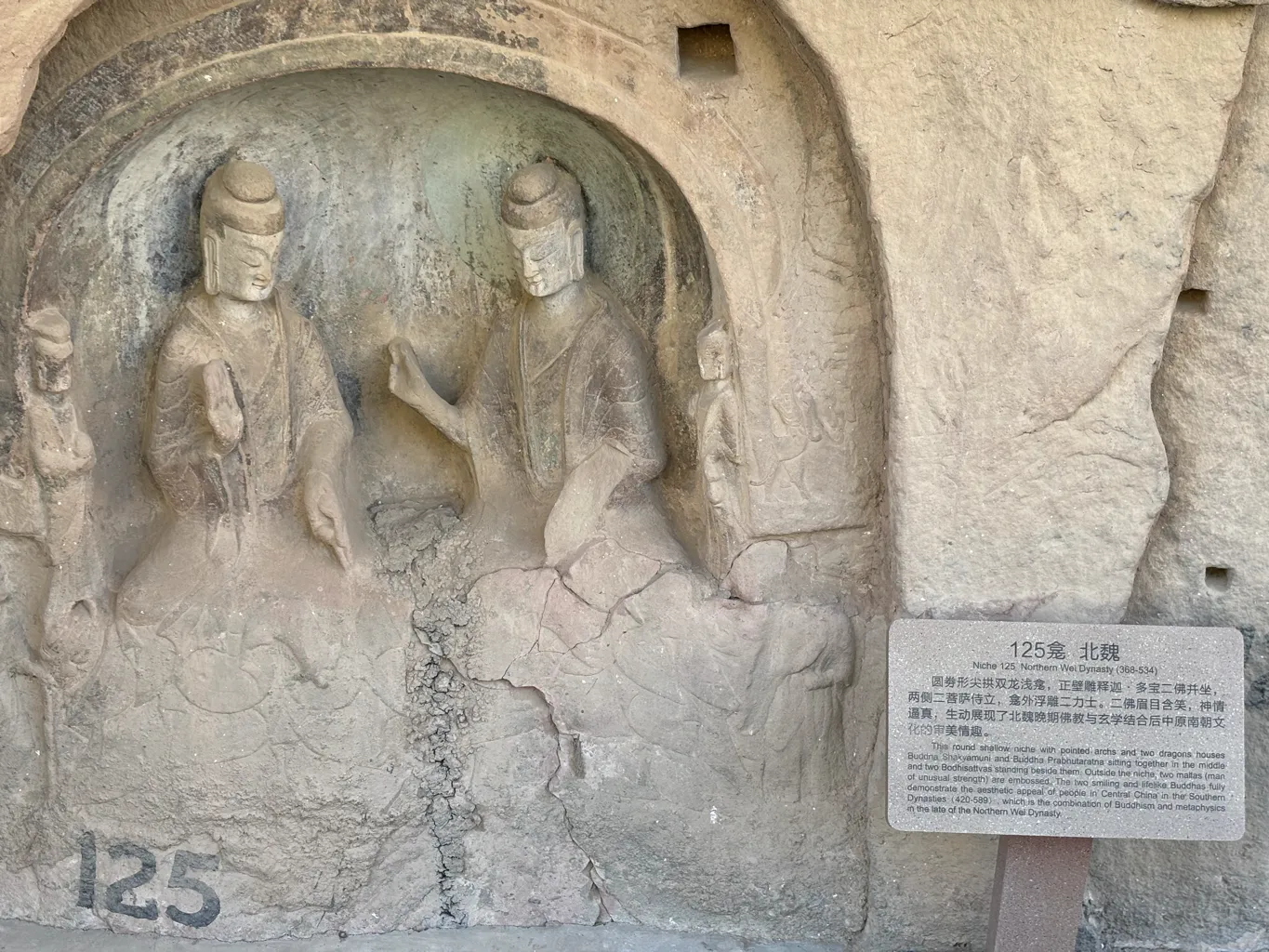
Grotto 134 (Northern Zhou Dynasty, 557-581 AD)
In Grotto 134, a Buddha stands on a high chancel, flanked by two Bodhisattvas. Murals repainted during the Tang Dynasty depict a scene of numerous Bodhisattvas attending a meeting. Thousands of Buddhas are painted on the dome.
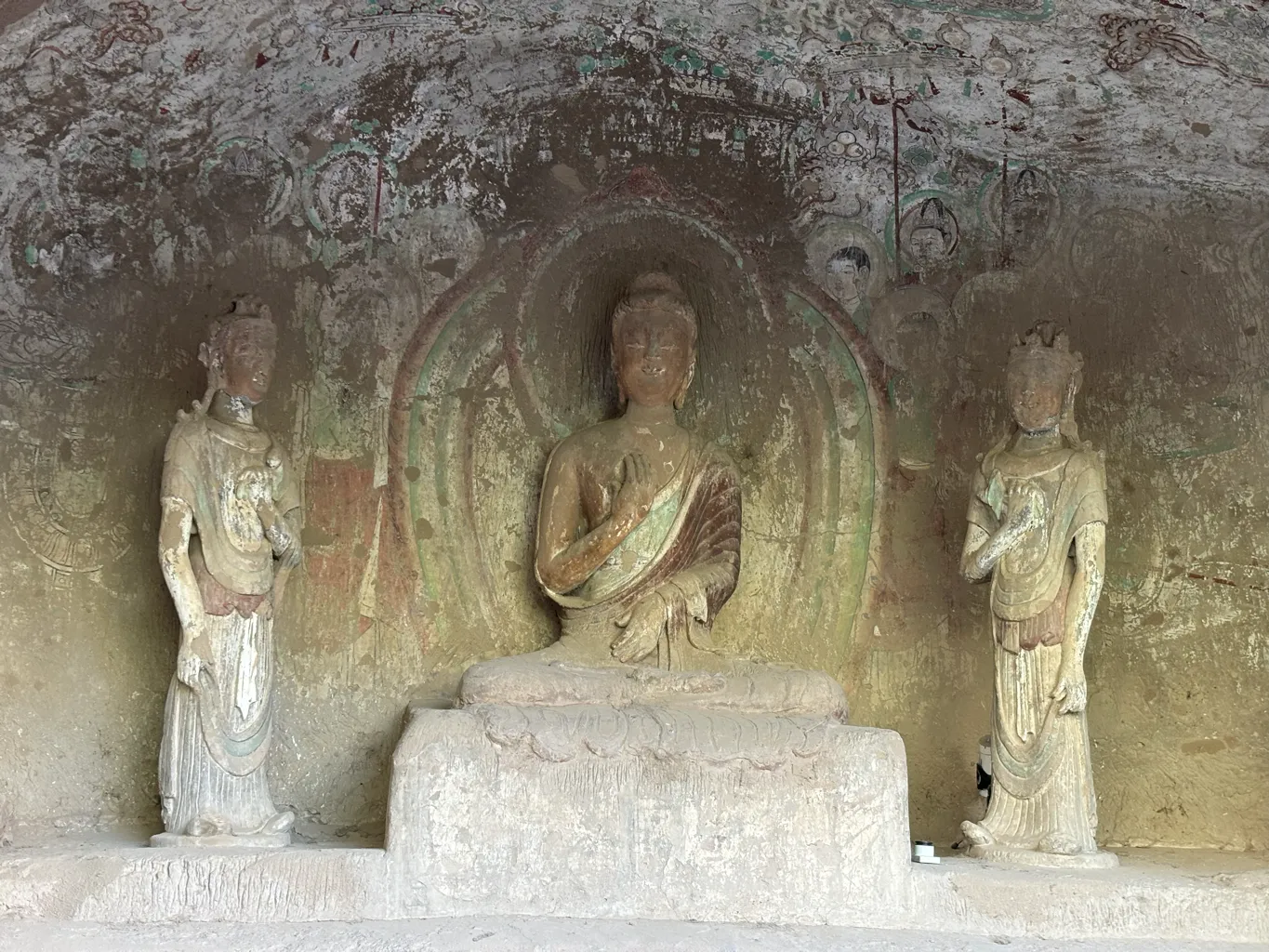
Niche 171 (Tang Dynasty, 618-907 AD)
Niche 171 was constructed in 731 AD. Sponsored by Gansu inspector Bo Chengtiao, it houses a Maitreya statue that stands 27 meters tall. This statue, the largest in Bingling Temple, is carved directly into the stone. The lower part of the body is sculpted from clay.
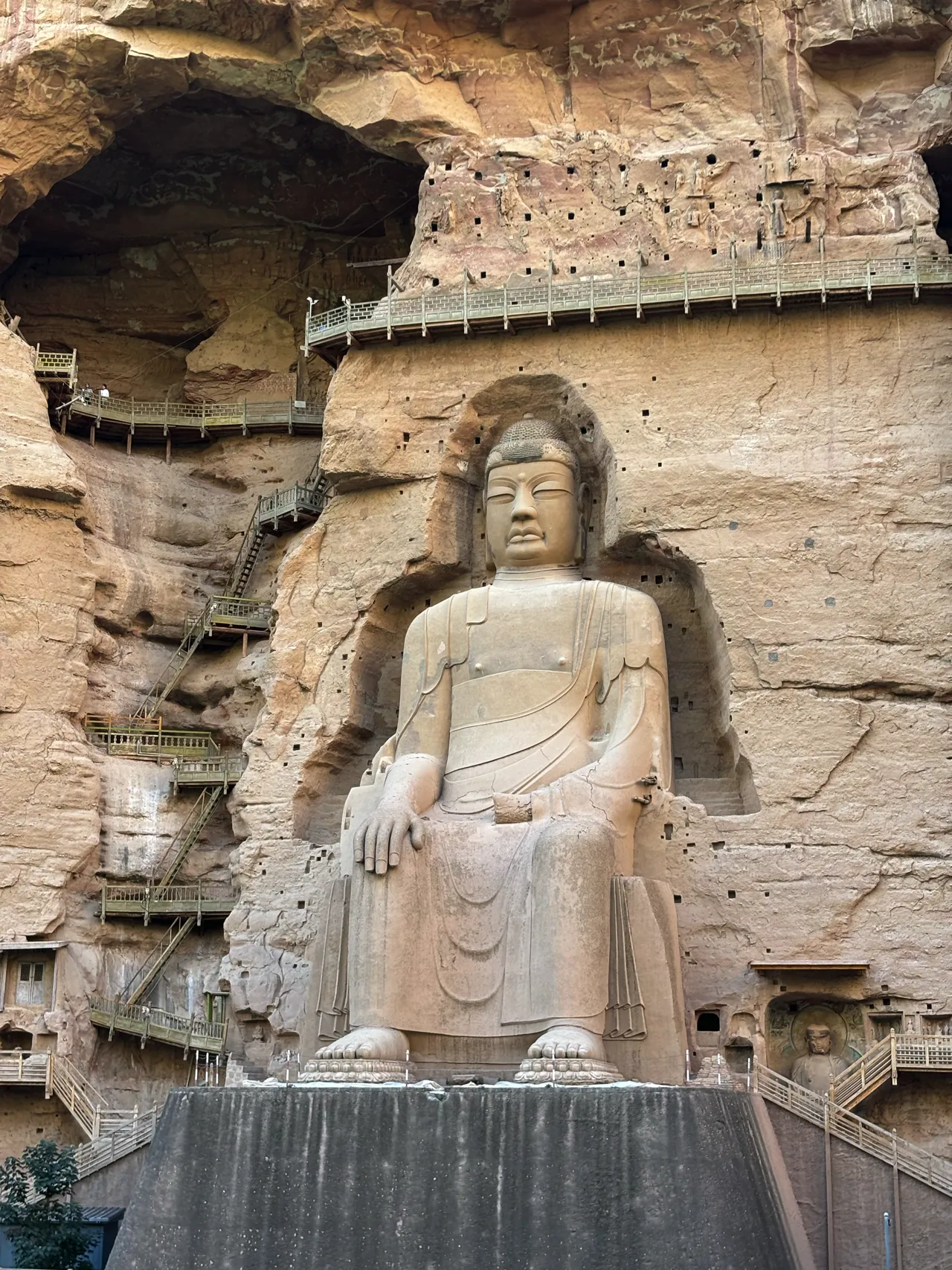
Visiting the Bingling Temple Grottoes
The Bingling Temple Grottoes draw visitors from around the globe. However, their remote location presents challenges. The site is only accessible by boat during the summer and fall seasons. Boats depart from near the Liujiaxia Dam in Liujiaxia City, the county seat of Yongjing County. During the rest of the year, the grottoes are inaccessible due to a lack of roads in the area.
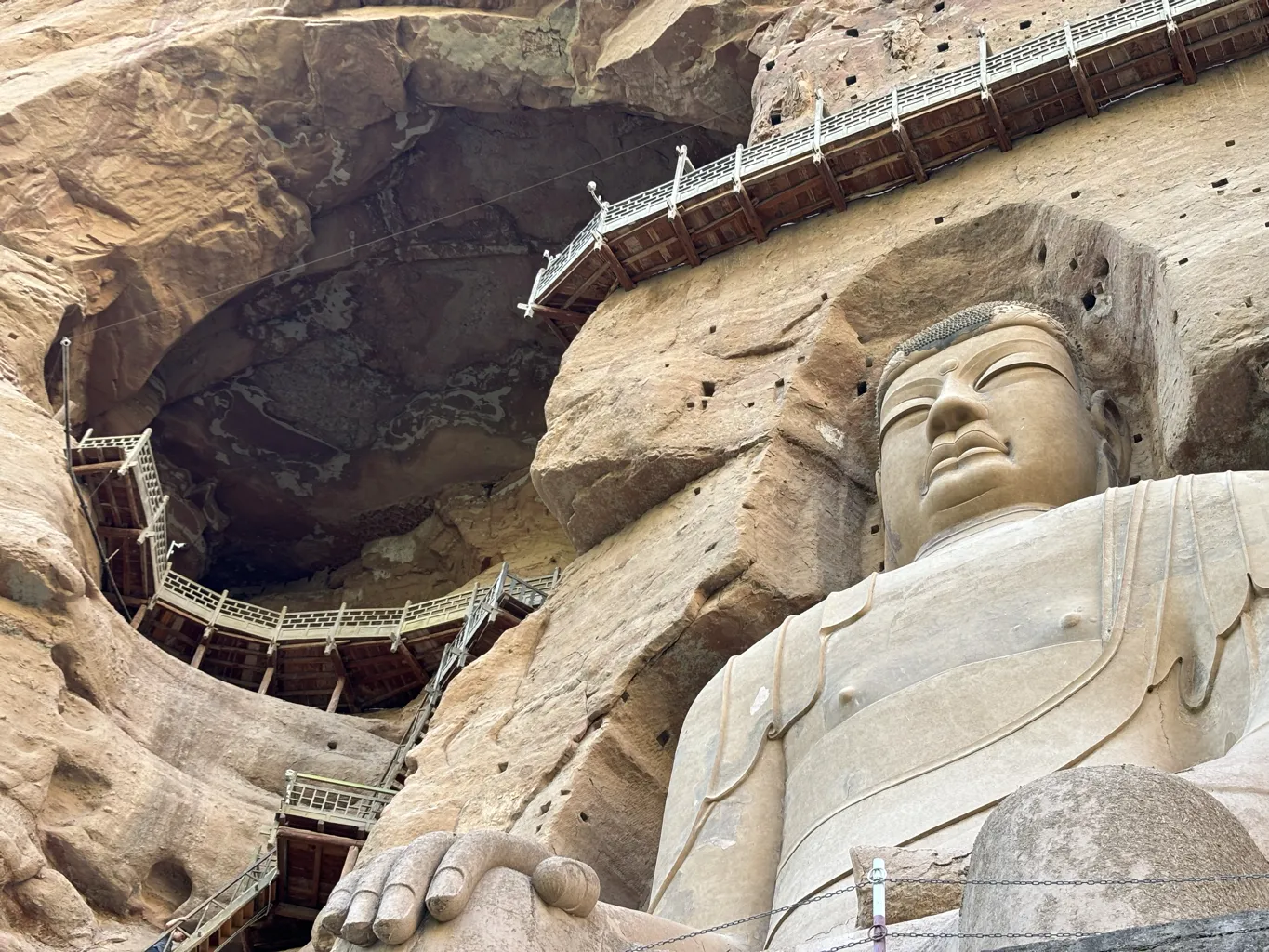
A Journey Worth Taking
The Bingling Temple Grottoes offer a fascinating glimpse into the spiritual and artistic heritage of ancient China. For those who make the journey, the site provides an unforgettable experience, blending natural beauty with human craftsmanship.
Sources:
Signs at the site itself
Wikipedia

